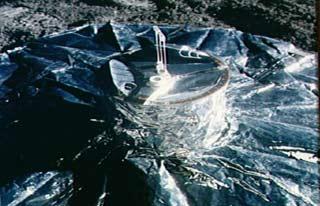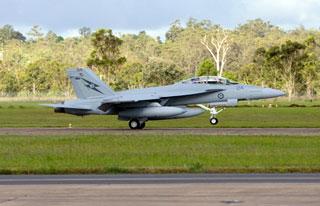
A close-up view of the Passive Seismic Experiment, a component of the Apollo Lunar Surface Experiments Package (ALSEP) which was deployed on the Moon by the Apollo 14 astronauts during their first extravehicular activity (EVA-1). Photo: NASA/JSC.
WASHINGTON (BNS): Researchers at NASA's Marshall Space Flight Center studying the moon say it has a core very similar to that of Earth, a finding they say could provide clues to the moon's formation.
The team's findings suggest the moon possesses a solid, iron-rich inner core with a radius of nearly 150 miles and a fluid, primarily liquid-iron outer core with a radius of roughly 205 miles, according to a NASA news release.
It differs from Earth's core because it a partially molten boundary layer around the core which estimated to have a radius of nearly 300 miles.
The research indicates the core contains a small percentage of light elements such as sulfur, echoing new seismology research on Earth that suggests the presence of light elements -- such as sulfur and oxygen -- in a layer around our own core.
"We applied tried and true methodologies from terrestrial seismology to this legacy data set to present the first-ever direct detection of the moon's core," Renee Weber, lead researcher and space scientist at NASA's Marshall Space Flight Center in Huntsville, Alaska, was quoted as saying in the release.
The researchers used extensive data gathered during the Apollo-era moon missions. The Apollo Passive Seismic Experiment consisted of four seismometers deployed between 1969 and 1972, which recorded continuous lunar seismic activity until late-1977.
The team also analysed Apollo lunar seismograms using array processing, techniques that identify and distinguish signal sources of moonquakes and other seismic activity. The researchers identified how and where seismic waves passed through or were reflected by elements of the moon's interior, signifying the composition and state of layer interfaces at varying depths.
"We hope to continue working with the Apollo seismic data to further refine our estimates of core properties and characterise lunar signals as clearly as possible to aid in the interpretation of data returned from future missions," Weber said.
Future NASA missions will help gather more detailed data. The Gravity Recovery and Interior Laboratory, or GRAIL, is a NASA Discovery-class mission set to launch this year. The mission consists of twin spacecraft that will enter tandem orbits around the moon for several months to measure the gravity field in unprecedented detail. The mission also will answer longstanding questions about Earth's moon and provide scientists a better understanding of the satellite from crust to core, revealing subsurface structures and, indirectly, its thermal history, the report further added.
 Previous Article
Previous Article Next Article
Next Article













The Indian Air Force, in its flight trials evaluation report submitted before the Defence Ministry l..
view articleAn insight into the Medium Multi-Role Combat Aircraft competition...
view articleSky enthusiasts can now spot the International Space Station (ISS) commanded by Indian-American astr..
view article